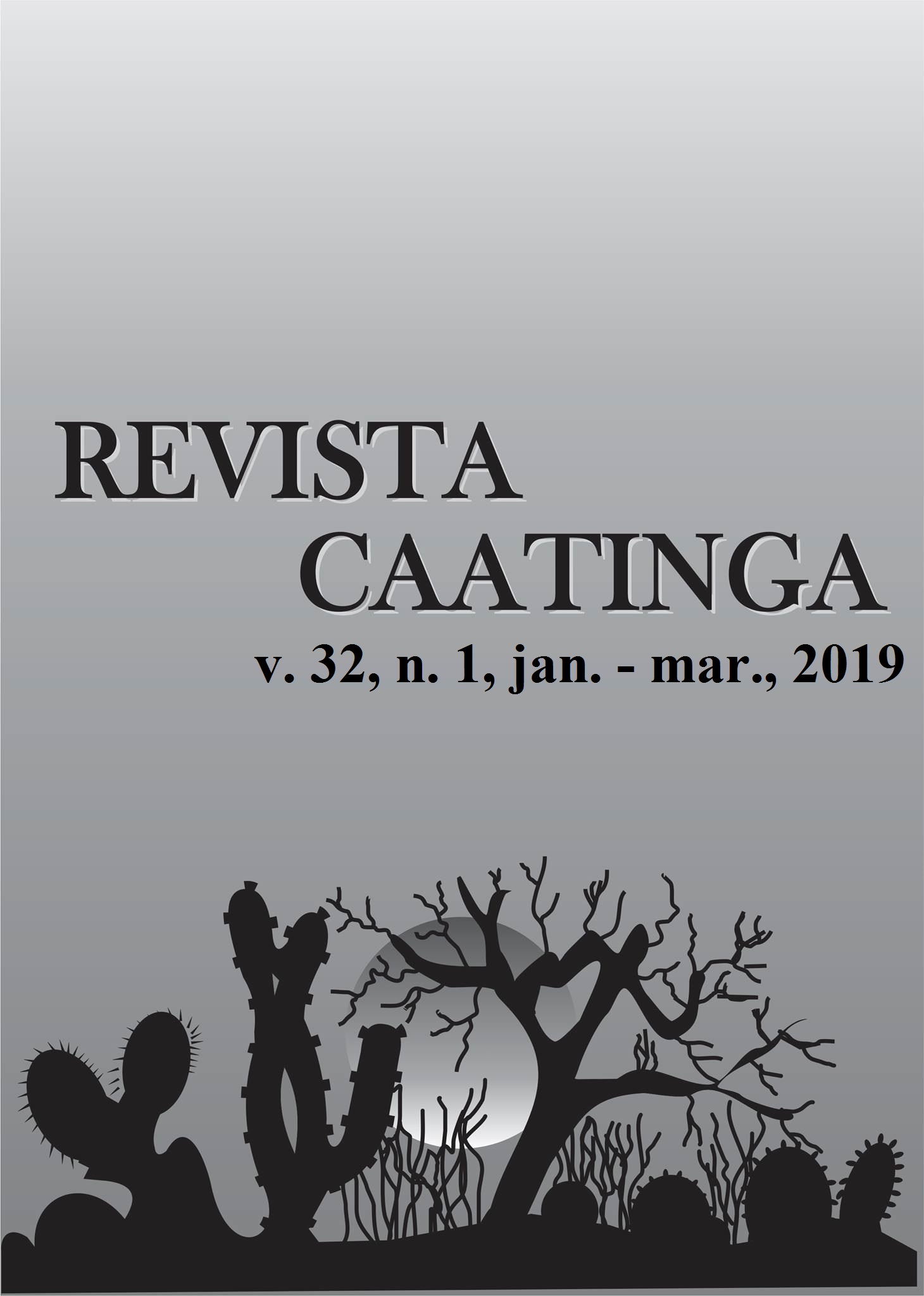GOAT MANURE FERTILIZATION AND IRRIGATION ON PRODUCTION COMPONENTS OF SUNFLOWER
DOI:
https://doi.org/10.1590/1983-21252019v32n121rcKeywords:
Helianthus annuus L. Organic fertilizer. Irrigation management. Class A tank. Yield.Abstract
Sunflower can be an economically viable crop in the Northeast region of Brazil depending on the use of appropriate irrigation and fertilization managements. The objective of this work was to evaluate production components of sunflower plants (Helianthus annuus L.) of the BRS-324 cultivar subjected to different organic fertilizer rates (goat manure) and irrigation water depths in two crop cycles (November 2014 to February 2015; and August to November 2015). The experiment was conducted in a randomized block design with a split-split-plot arrangement, consisting of five organic fertilizer rates (OFR) (0, 300, 600, 900, and 1.200 mL plant-1 week-1) and five irrigation water depths (IWD) (33; 66; 100; 133, and 166% of the class A tank evaporation), with three blocks. The highest achene yield (1,220.78 kg ha-1) in the first cycle was found using OFR of 1,200 mL plant-1 week-1 and IWD of 134.9% (524.9 mm); and the highest yield (882.07 kg ha-1) in the second crop cycle was found using the highest OFR combined with IWD of 166% (843.0 mm). The use of goat manure as organic fertilizer had no effect on the sunflower oil content; however, this variable was affected by the irrigation water depths used. Protein content was higher in the second crop cycle (14%) when using IWD of 100% and OFR of 536 mL plant-1 week-1.
Downloads
Downloads
Published
Issue
Section
License
Os Autores que publicam na Revista Caatinga concordam com os seguintes termos:
a) Os Autores mantêm os direitos autorais e concedem à revista o direito de primeira publicação, com o trabalho simultaneamente licenciado sob a Licença Creative Commons do tipo atribuição CC-BY, para todo o conteúdo do periódico, exceto onde estiver identificado, que permite o compartilhamento do trabalho com reconhecimento da autoria e publicação inicial nesta revista, sem fins comerciais.
b) Os Autores têm autorização para distribuição não-exclusiva da versão do trabalho publicada nesta revista (ex.: publicar em repositório institucional ou como capítulo de livro), com reconhecimento de autoria e publicação inicial nesta revista.
c) Os Autores têm permissão e são estimulados a publicar e distribuir seu trabalho online (ex.: em repositórios institucionais ou na sua página pessoal) a qualquer ponto antes ou durante o processo editorial, já que isso pode gerar alterações produtivas, bem como aumentar o impacto e a citação do trabalho publicado (Veja O Efeito do Acesso Livre).







